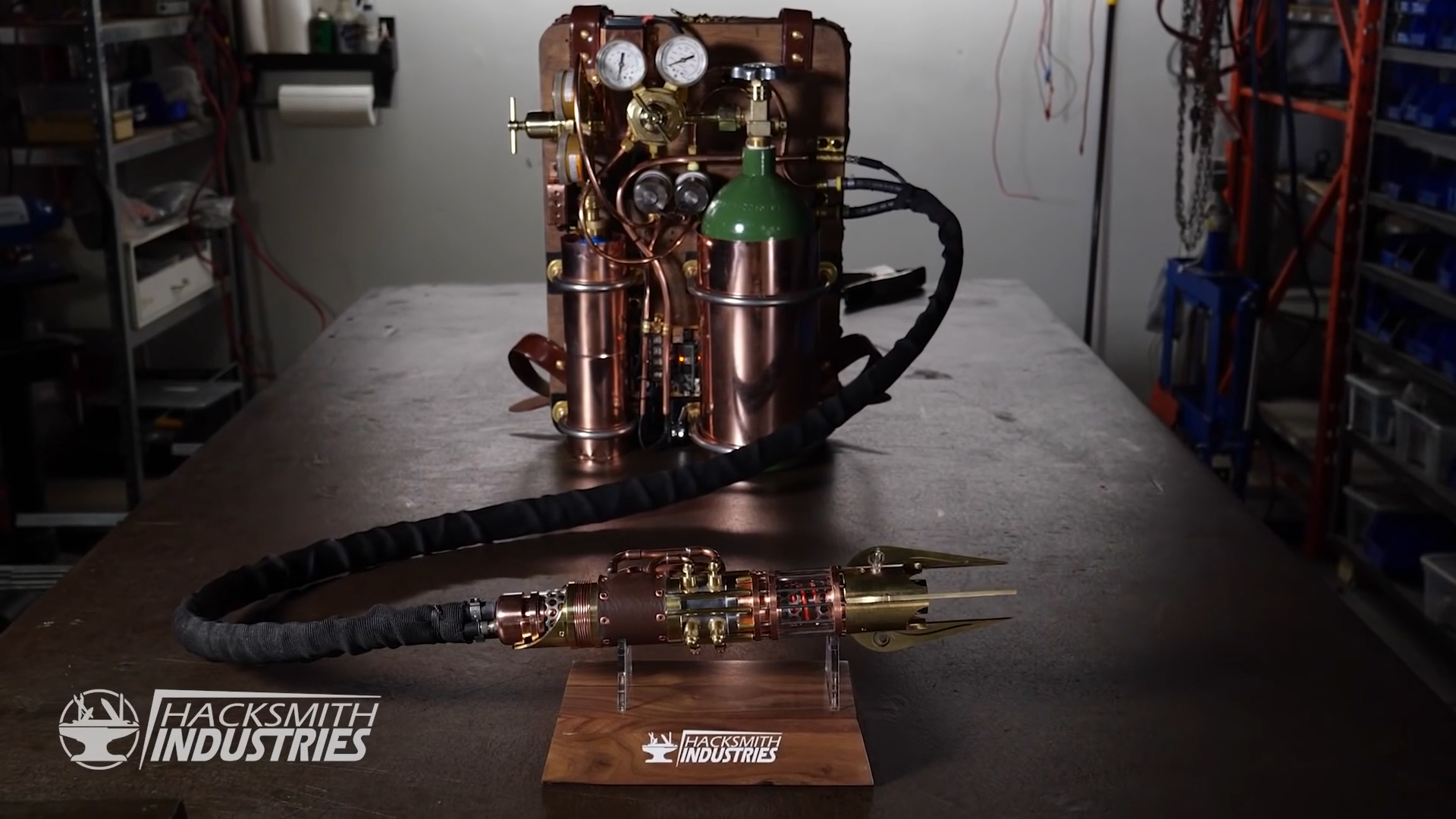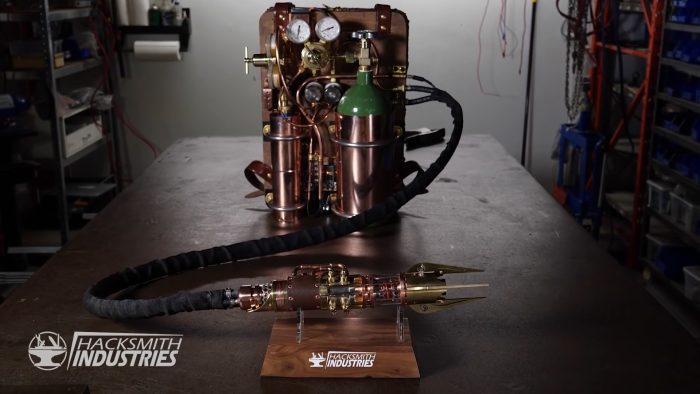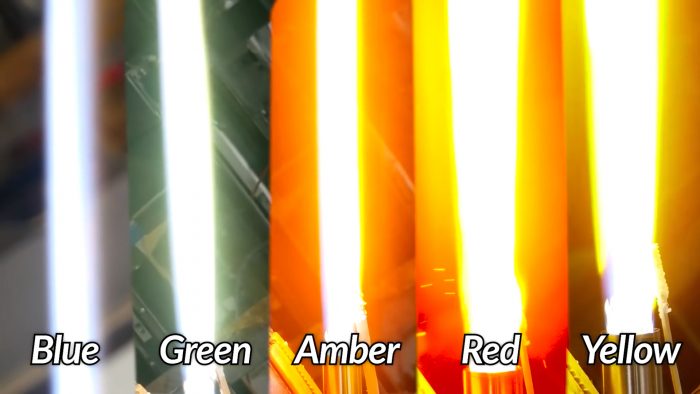How many of you have dreamt about wielding a lightsaber just like your favourite character of the Star Wars saga and had to accept just a scrappy plastic replica?
Probably you as many people believe that having the power of cutting through any material and melting thick steel doors was only a childish fantasy, but thanks to the Hacksmiths this has become a reality. They are a group of scientists, engineers and designers that publish videos about making video-games and movies peculiar and famous props come to life, all of this on the well-known web platform “Youtube” where they have a huge following made up of 11.8 million people.
Almost 5 months ago, after 4 years and 3 past prototypes they managed to create the world’s first retractable plasma lightsaber capable of reaching 2200 degrees Celsius.
How does this saber work? Unlike its predecessors also realized by the Hacksimths this is the first saber that is actually retractable, just like the movies. As a matter of fact, in the past the prototypes they built had the saber made up of solid material, like the Nitol wire in version 1.0, or the Titanium blade in versions 2.0 and 3.0 that were heated at really high temperatures. In this case, however, the saber is generated by a plasma laminar flow, this is a fenomena that makes a fluid, in this case plasma, fluish without any remixing in the molecules, this forms a perfect flow that gives the illusion of the fluid not moving.
However, to reach the laminar flow state of plasma an enormous amount of energy is needed, this means that the lightsaber needs to be powered by an external power supply because of the massive energy consumption that an internal buttery could never support.
Despite this even a normal Li-Po power pack would not be enough, in fact a more energy-dense fuel is needed. The Hacksmiths decided to use LPG (liquid propane gas) that is 50 times more energy-dense than a classic power supply.
Moreover, thanks to the plasma beam it’s possible to color the blade using different chemical compounds. As a matter of fact the blade, in its normal state, is a white blueish colour, but we can obtain a green blade, a red blade, an amber one, and a yellow one as you can see from the image below.
Roberto Zinna e Azzurra Ridolfo, III I



